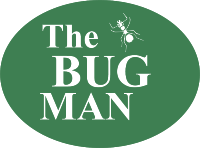As we head into winter, many of us look forward to getting cozy in front of a warm fireplace. Unfortunately, if you want to stay prepared to keep warm in the winter, you also have to stay prepared against inevitable pest problems that will develop without proper precautions. We have helped many people around Central TN get rid of pest problems in their house, in the process discovering that their firewood is the source of the problem. The Bug Man is here to teach you how to avoid pest problems caused by poor firewood management—read on to learn!
What Pests Infest Firewood?
Having insects in your firewood isn’t always a big deal. Boxelder bugs, earwigs, moths, some spiders, and more pests will do no more than become an annoyance when they decide to look for shelter in our woodpiles. However, there are a few insects that we have to be on the lookout for, those being:
These insects pose varying degrees of danger to your home. Of course, bees and wasps always come with the threat of stings, and even anaphylaxis in some. However, the first three pests listed can all cause damage to wooden structures, with termites being able to cause thousands of dollars in damage.
How to Keep Pests Out of Your Woodpile
In order to avoid a termite infestation or an outbreak of many other kinds of pests, there are a few precautions you must take. Here are The Bug Man’s best pieces of advice for woodpile pest prevention:
- Store firewood away from your house: The further away from your home you stash your firewood, the lesser the chance of a pest infestation. Many people lean their woodpiles against the outside of their home, only to find out that that has caused a pest infestation.
- Keep firewood covered and off of the ground: Since insects like termites and carpenter ants live in the soil, keeping your woodpile on the ground leaves destructive pests easy access to your home. Drape a tarp over your pile and keep it elevated however possible.
- Choose older wood first and burn it quickly: Older wood is more likely to be hosting pests, but if you take your wood straight to the fire, you shouldn’t have insects making their way out.
Need Pest Control Help this Winter?
If you suspect that your woodpile is causing pests to invade your home, talk to your local pest control program about your issues. The Bug Man’s team is trained to carry out exhaustive property inspections, leaving no stone (or log) unturned in the pursuit of pests. Don’t let pests take over your home this winter—contact us for a free quote today!


